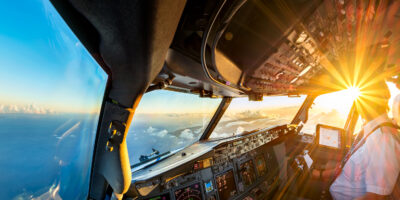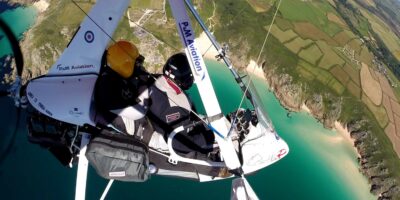There are nine online PPL Ground exams you will have to pass within 18 months. The clock starts from the end of the calendar month when you attempt the first exam. Once the exams are done, you have 24 months from the end of the last exam month, to complete your flight training and obtain your licence. The Theoretical Knowledge syllabus is the same for PPL and LAPL.
Linda Wheeler, who runs Linda Wheeler Groundschool near Denham Aerodrome in Bucks says, “Following the recent launch of the new online PPL/LAPL exams system, many students say they are finding the new system more challenging.”
You must complete the online exams before taking the flying Skill Test.
If time is at a premium, you might consider signing up for an intensive groundschool course, where you study and complete all your exams in one go.
PPL students are required to undertake at least 100 hours of theoretical knowledge training, which can be split among formal classroom work supported by other interactive forms of training and self-study. It may sound like a lot, but divide those hours by the number of exams, and you get a sensible amount of time per subject.
Talk to your flying school, who will advise you on the study required, provide groundschool support and, ultimately, ensure you’re ready to sit each exam.
The first step
The first step is to get registered on the CAA portal as that is the only step which has a lead time – usually five working days.
The student then uploads their ID information to use in the exam and inputs the correct ATO for approval. Once this is done, the training school takes over and books all the exams.
All of the PPL e-exams are multiple-choice, with between 12 and 16 questions giving you four possible choices and requiring a pass mark of 75%. These questions are randomly selected from a 1,000-question bank.
Air Law
This is often one of the first exams to be taken as many schools require you to have it before you fly solo. There are 16 questions and the exam time is 35 minutes. Example question:
Q. How many take-offs and landings must a pilot make in the last 90 days to carry passengers?
A. Three
Human Performance & Limitations
This contains basic questions about your body and the effects of changes of the Earth’s atmosphere. 12 questions/25 min.
Q. What happens to the proportion of oxygen in the atmosphere as a pilot climbs to 8,000ft?
A. The proportion remains constant.
Meteorology
Understand the atmosphere and how weather patterns develop, along with how to interpret weather charts and briefing notes, is essential. 16 questions/50 min.
Q. Your are flying into colder weather. The regional pressure is 1012 hPa and the aircraft is flying at 5,000ft. Without changing your pressure setting, how will your altimeter read?
A. The altimeter will over read.
Navigation
Learn how to read a chart and use your navigation computer to complete an orderly flight plan, including radio frequencies, alternate aerodromes and a fuel plan. 12 questions/45 min.
Q. Your aircraft is cruising at 5,000ft, with an outside temperature of minus 5 degrees. Your indicated air speed (IAS) is 85kt, what is your true air speed (TAS)?
A. 90kt
Aircraft General
Covering aircraft systems – engine, fuel, oil and electrical. It gives you a good background knowledge as to the working of an aircraft. 16 questions/35min.
Q. The wing structure that takes up the vertical bending of the wing is called what?
A. Spars
Flight Performance & Planning
This concentrates on how well an aircraft performs in differing situations, but with an emphasis on the practical aspects of flying. You will learn, among other things, the safest way to load your aircraft and how to get the best range and endurance out of it. 12 questions/45min.
Q. What is 16 USG of fuel in lb with a SPG (specific gravity) of 0.72?
A. 96lb
Communications
Your Radio Telephony RT Licence will allow you to fly through certain categories of airspace and into aerodromes with Air Traffic Services. 12 questions/20min.
Q. When carrying out a transmission test on an aircraft’s radio, what does readability 2 mean?
A. Readable now and then.
Operational Procedures
This is the operating rules and safety aspects of flying. 12 questions/30min.
Q. The length of the take-off run available plus the length of the clearway if provided is called what?
A. TODA (Take off distance available)
Principles of Flight
Concentrates on how well an aircraft performs in differing situations, but with an emphasis on the practical aspects of flying. You will learn, among other things, the safest way to load your aircraft and how to get the best range and endurance out of it. 12 questions/45min.
Q. Why do aircraft have wing tips?
A. To reduce induced drag.
Radiotelephony Practical
The Radiotelephony (RT) Practical exam will be based around an imaginary flight in a radio simulator or on a PC-based system, with your examiner playing the part of the air traffic controller.






